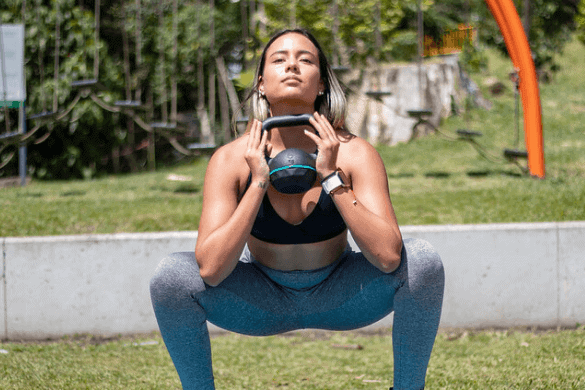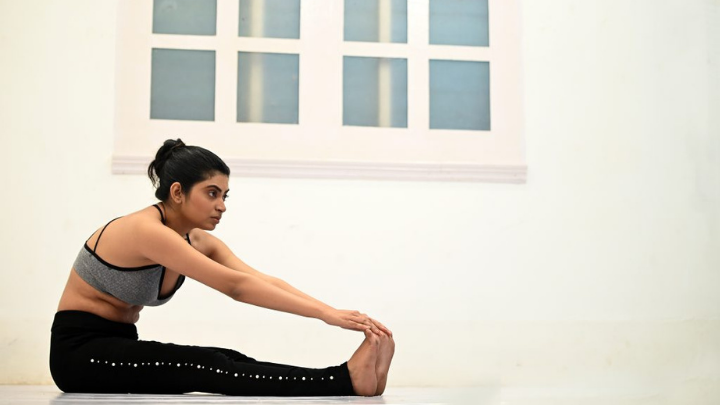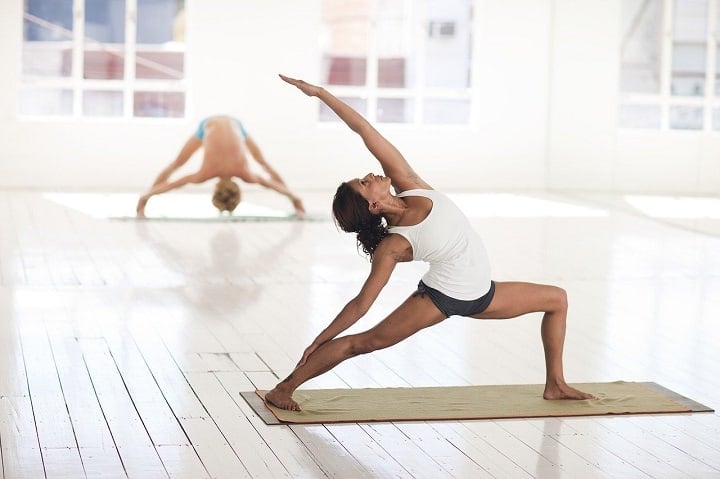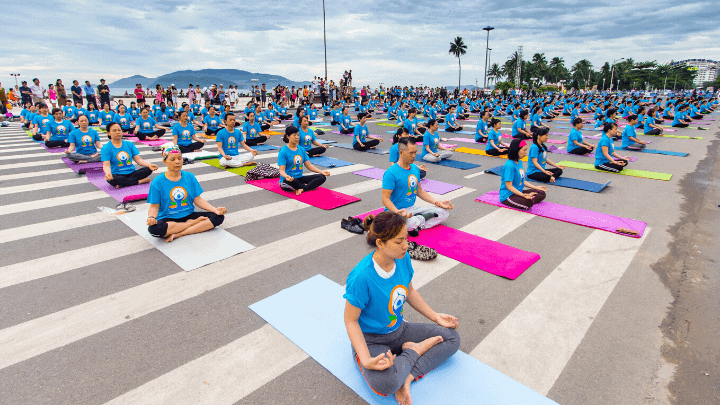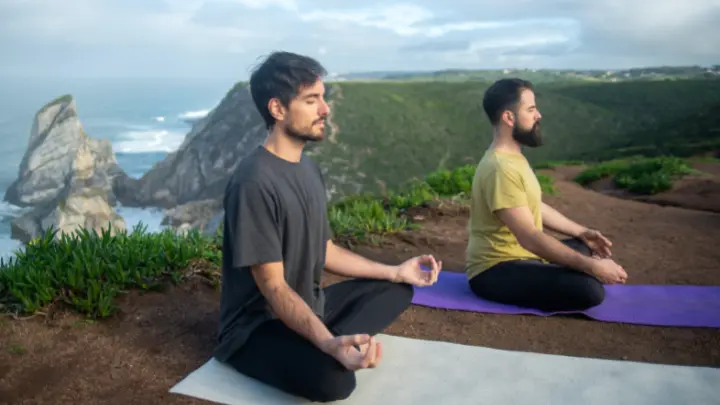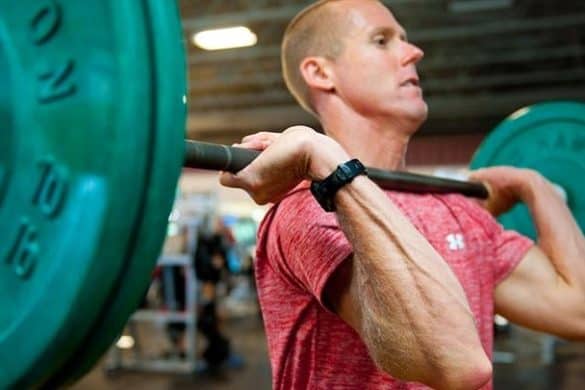In this article, you are going to learn about the benefits of squats, which you can use whether you are a competitive athlete or just a fitness enthusiast.
This guide also includes:
- The different variations of squats and their differences
- The benefits of each squat variation
- Machine squats vs Free-weight squats
- Core strength for a strong squat
What are the benefits of squats, one of the primary natural human movements?
See, you squat when you pick something up, when you sit down, and during many other daily physical activities.
But what are the actual benefits of it once you start to strategically overload and increase your strength and endurance on this exercise?
Well, in this article you’ll find out the specifics of the most common squat variations and the cases in which they are suitable.
Now let’s first discuss the best-known variation of the barbell squat exercise: the barbell back squat.
Back Squat

The barbell back squat is without a doubt the best-known lower body exercise amongst the fitness masses.
Some people love it, others hate it, but the truth is that this one exercise has massive benefits, due to a couple of factors:
- Firstly, the barbell back squat works the biggest muscles of the entire body, namely the lower body musculature (quadriceps, hamstrings, gluteus maximus)
- Secondly, to maintain balance, we pretty much flex the entire body
In other words, the barbell back squat is a full-body exercise, which primarily targets the quadriceps, hamstrings and glutes, while secondarily engaging the core, spinal erector, practically the entire posterior chain and other major muscle groups of the upper body.
Summary: The back squat is a multi-joint movement that primarily engages the lower body and secondarily, the core muscle, making it an exercise that is practically beneficial for the whole body in a variety of ways.
Benefits of The Back Squat
One of the best things about the back squat is that it is literally the epitome (representation) of dealing with the hardships in our lives’
Think about it, you have a big weight on your back, which is pushing you down.
At the lowest portion of it, you explode on the way up and deal with the forces that are pushing you down.
Not only does the back squat develop a strong character but also strong legs.
Whether you are trying to make your legs stronger, more durable, explosive or just better-looking, the back squat is the best addition to your training program.
It is not a coincidence that many sports disciplines and even CrossFit rely on the back squat.
Here is a list of our favourite things about the barbell back squat
- Helps develop strong quadriceps
- Improves posture by working on the lower back muscles
- Develops overall balance
- Highly anabolic (constructive) as the whole body is engaged
- Can improve broad jump and sprinting speed
The back squat is the most common lower body exercise, which is a pillar of leg strength and a power move for all powerlifters, olympic lifters and most fitness enthusiasts. This exercise does wonders on lower body strength, explosiveness and conditioning, as well as overall balance and other physical properties.
Well, the barbell back squat certainly is a good exercise that was designed for the squat rack, but then again, there are other variations of this exercise.
Note: If you’re having a hard time learning the barbell squat, you can resort to variations like the box squat, where you’re basically sitting down and standing up from a bench.
From then on, once you get to the barbell squat, experiment with high bar and low bar positions, where the bar is higher or lower on the trapezius, respectively.
Now let’s talk about front squats and how they can help you build muscle safely.
Summary: The back squat is an amazing movement that will blast your quadriceps, hamstrings and glutes, while also giving the lower back and core a great deal of work.
Front Squat
If you’ve been in the gym for a while, odds are that you have seen people doing a barbell squat with the barbell on their shoulders:

This is referred to as the “front squat” and is without a doubt a fancy movement worth learning.
As opposed to the barbell back squat, the front squat requires a certain level of shoulder mobility and in our honest opinion is a harder exercise to learn.
That is mainly because the balance and pressure points are different on both exercises, which makes the body use slightly different muscles to balance throughout the movement.
Summary: The front squat is a more complex squatting movement that requires better technique and balance.
Barbell Back Squat vs. Barbell Front Squat
Alright, the difference in squat position is pretty apparent when both exercises are compared, but does that matter for the activation of the lower body musculature?
Well, the fact of the matter is that there is actually no difference whatsoever when it comes to the work of the lower body musculature according to NCBI.
Whether you are doing barbell front squats or back squats, the development of the leg muscles is pretty much the same.
The only difference would be at the shoulder line, as the holding position is different.
As the arms are lifted up and that position is maintained, there will be certain muscles involved to support and sustain this movement.
Those would be namely the front deltoids, as well as some of the scapular muscles that stabilise the shoulder joint.
Benefits of Front Squats
Though the front and back squat activate the lower body musculature equally, there are differences which can be taken advantage of in certain cases.
The study we linked you to above not only measured lower body muscle activity for both squat variations but also the impact on the joints during those movements.
Results from the study show that the front squat puts the knee joint through substantially less pressure in comparison to back squats.
The practical applications for this can be used by people who have past or present knee injuries, which can get easily aggravated by other leg exercises.
Here are our favourite things about front squats:
- They can help develop stronger quadriceps, hamstrings and glutes, as well as the shoulder line
- Just like back squats, they do wonders for your leg explosiveness
- Helps develop a more solid posture
- Improves your balance
- Are less impactful on the knees compared to other leg exercises such as back squats
Summary: The front squats engage the lower body in the same way back squats do. However, they are less impactful on the knees and hence, can be used by people who run into knee problems.
Barbell Squats vs Machine Squat

Now, we know for a fact that not all people prefer the barbell squat variations, which is completely fine.
There are in fact people who just can’t get a good lower body activation or proper form, due to the length of some lower body bones or joint mobility/flexibility.
Note: According to scientific studies, if you lack the range of motion (whether depth in squat or correct upper body positioning), it is recommended that you work on improving your flexibility and mobility before adding weight to your squats in order to “help prevent injuries and ensure safe performance”. We’ve written a guide about the type of exercises you can do.
In those cases, many people rely on certain types of machine squats to get them through the heavy part of their lower body workouts.
But what are the differences between barbell and machine squats?
Well, there are some advantages to machine squats.
For one, an exercise like the machine hack squat allows for a fixed movement.
This makes it much less likely (actually impossible) for you to lose balance.
Furthermore, this fixed movement allows you to push more through the heel, making for better quadriceps activation overall.
However, the bad part about machine squats is that with bad execution, the risk of injury increases.
Natural Free-Weight Movements
The free-weight squats are by far more natural, in terms of the movement pattern.
For example, with the hack squats, the knees barely go forward and with heavier weights, that would put a lot of strain on certain knee ligaments.
On top of that, when the movement is fixed and your back is tight onto a pad, there are certain uncommon hip movements that can happen without you realising it.
Such hip movements can lead to lower back injuries easily, which is never what we are looking for.
To avoid all of the above, it is best to always check your form (by filming yourself), to ensure you’re doing a proper squat.
Furthermore, you can get a personal trainer to assist you.
The video below will teach you how to squat. Created by NFL strength coach Jeff Cavaliere:
Summary: Machine squats are a great way to drive more tension through the lower body musculature, but can also be dangerous for the knees, hips and lower back, if done the wrong way.
Free-weight squats on the other hand are more natural movements which allow for more muscles to be engaged.
It is best to include a good mix of both variations, for best results.
The Benefits of Squats
So far, we’ve learnt that all the variations of the squat do wonders on lower body strength, explosiveness, stamina and overall conditioning.
Not only that but as an exercise, the squat massively engages the entire body, as a lot of balance is required throughout the entire movement.
If you stay true to squats and progressively overload on them, you will develop strong, better-looking quads, hamstrings, glutes and last but not least, a strong core and lower back.
However, one of the less known things about a good squat, is namely the core strength required to sustain a good torso posture, during the entire movement.
Summary: Overall, squats (and especially weighted squats) are a great pick for any training routine. All the benefits of squats combined will set your whole body on fire and make it a calorie-burning, anabolic machine.
Let’s Talk Core Strength

When someone mentions the word “core”, people instantly think of “abs”.
However, the fact of the matter is that the core itself is made out of many muscles, and not just the “Abdominus Rectus”, also known as the “Sixpack”.
As a matter of fact, there isn’t a unanimous decision about which exact muscles make up the core.
However, it is generally accepted that the core consists of these four deep abdominal and oblique muscles:
- Transverse abdominis – located under the obliques
- External abdominal oblique – located on the front and side of the abdomen
- Internal abdominal oblique – run in the opposite direction to the external abdominal oblique
- Rectus abdominis – located along the front of the abdomen (also known as the “six pack”)
So, you see, contrary to popular view on the body, it’s not always just one muscle, but multiple, that are working together during compound exercises such as the squat.
It is a network of muscle fibres that grant stability to the body, during practically any movement, including the squat.
The reason why we’re saying this is because the squat is a heavy, compound exercise that works on the above-mentioned core muscles. (and this is one of the main benefits of squats)
If you break down the motion, you have a couple of parts:
- Keeping the torso from falling forward
This is where the lower back muscles come into play to stabilise the upper body and prevent it from bending under the forces of the weight.
- Dipping the hip on the way down, slowly
During this part of the movement, the quadriceps, hamstrings and glutes stabilise the whole lower body movement with eccentric tension (the eccentric portion of the movement is the part of an exercise’s range of motion where the muscle is not shortening).
Furthermore, the calves statically balance the legs too.
- Squatting up
For this part of the movement, the quadriceps and glutes dynamically engage from the bottom position, to allow you to move up explosively.
This is also referred to as the “Concentric” part of the movement, where the muscles’ contracts (shorten).
- Hip flexion up top
If you want to focus more on the glutes during the movement, there are a couple of things you can do.
The first one is having a wider stance, almost in a sumo squat, where the toes are pointing out at an angle (which also helps with ankle dorsiflexion/mobility)
On top of that, you can flex your hips up top and contract the glutes powerfully.
Alternatively, you can use a dumbbell or a kettlebell and do a goblet squat to reap all the benefits of squats for the glutes.
What about this is important for you?
The reason why we’re saying all of this so far is to let you know about one of the biggest benefits of squats, namely: creating a solid foundation at the core of your body.
When it comes to total body strength, a strong core is fundamental for just about anything. Whether that’s for the big three exercises (squats, deadlifts and bench press), or whether that is with bodyweight exercises and natural activities like running, swimming and climbing.
Abs are made in the gym, but are made visible in the kitchen.

Summary: A strong core is the foundation to total body strength, which is why, implementing the right exercises can be beneficial.
Our Top Three Core Exercises (Beginner And Advanced)
If you want to reap all the benefits of squats and get stronger in that exercise overall, you will need a strong core, besides strong legs.
You see, it’s not always just heavy weights and barbells.
You can come to find that most big bodybuilders actually lack strength in the most important areas of their bodies.
This is exactly why all beginner lifters should consider becoming masters of their own body weight, before jumping into strength training.
Top three core exercises
Below are the top three beginner to advanced bodyweight core exercises, which will make you feel truly superhuman.
1. Regular crunch (beginner exercise)
One of the best exercises to start gaining strength and stability in one of the important parts of the core (the abdominal area), is the regular crunch.
We know for a fact that crunches with a bad diet won’t get you abs, but they certainly will help you develop the properties of those muscles.
Execution
- Lie down on your back
- Pull your heels in closer to your butt
- Place your hands behind your head
- Curl your body up, without letting the mid/upper back come up
- Contract the abs then return to the initial position
- Maintain that movement pattern
The exercise can be done a couple times a week, for 3-5 sets of 12-15 reps, depending on how advanced you are.
2. Hanging knee raises (intermediate exercise)
If you have some ab strength going on, then it is probably time to make things a bit harder.
Working the abs directly against the force of gravity with this hanging move will give you one hell of a pump.
Execution
- Grab a pull-up bar at about shoulder-width and hang freely with your feet together
- Raise the knees up towards the chest and contract the abs
- Hold the contraction briefly up top
- Go back down slowly
- Repeat the movement pattern
Again, the exercise can be done a couple of times a week in combination with the regular crunch. 3-5 total sets of ~15 repetitions.
3. The dragon flag (advanced exercise)
So far, we have shown you fairly easy exercises so it is time to go extra hard on exercise number 3.
Keep in mind that you don’t necessarily have to go extra-long on this exercise.
Simply, start practising it and even if you hold it for just a second, work your way up!
Execution
- Sit in front of the Swedish wall, with your back against it
- Lie down straight and grab the lowest bars of the Swedish wall (both underhand and overhand grips work, check which one feels better)
- Tense your abs as if you’re trying to lift your legs off of the ground
- Lift your legs off of the ground and support your weight only on the upper back at the shoulder line
Summary: By combining compound, bodyweight and other free-weight movements, you will develop a strong base of fundamental strength, which will translate into better workouts overall. The core exercises above are a great place to start!
Conclusion
The benefits of squats are more than one, which is exactly why incorporating this exercise and its variations into your strength training routine is one of the best things you can do for your overall muscular development.
Ultimately, if you are prone to knee pains, bodyweight squat and other variations like the front squat are recommended to counteract the disadvantages of this exercise.
Now that you have learned more about the benefits of squats, you can structure a good, squat-based workout, that will fit your exact needs and individualities.
What is the next step in your physical development?
All you have to do is make strong decisions that will impact your life in a good way.
Photo Credits:
http://www.ptpioneer.com/

